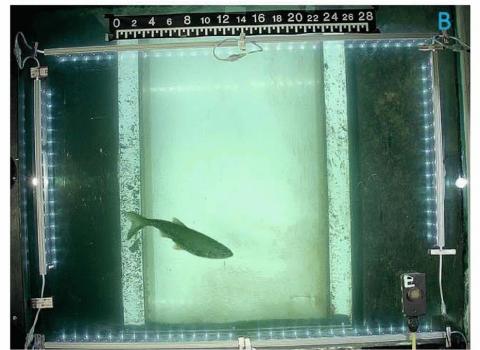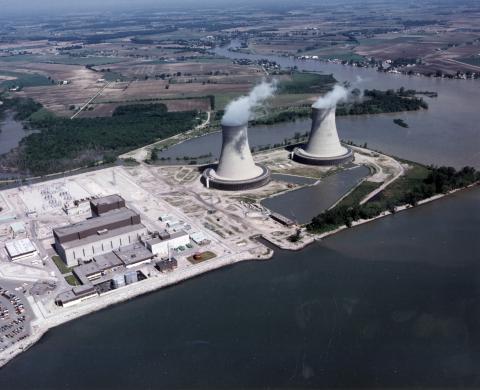Recent studies have shown that reducing the precision of floating‐point calculations in an atmospheric model can improve the model's computational performance without affecting model fidelity, but code changes are needed to accommodate lower precision or to prevent undue round‐off error. For complex...
Filter results
Category
- (-) Computational Research (9)
- (-) National Security (6)
- (-) Chemistry (2)
- Scientific Discovery (70)
- Biology (47)
- Earth System Science (28)
- Human Health (23)
- Microbiome Science (10)
- Integrative Omics (7)
- Materials Science (5)
- Computing & Analytics (4)
- Data Analytics & Machine Learning (4)
- Chemical & Biological Signatures Science (2)
- Energy Resiliency (2)
- Weapons of Mass Effect (2)
- Atmospheric Science (1)
- Coastal Science (1)
- Energy Efficiency (1)
- Energy Storage (1)
- Plant Science (1)
- Renewable Energy (1)
- Solar Energy (1)
Project Type
Publication Type
Tags
- Autoimmunity (4)
- Biomarkers (4)
- Molecular Profiling (4)
- Synthetic (4)
- Type 1 Diabetes (4)
- Machine Learning (3)
- Mass spectrometry-based Omics (3)
- Predictive Modeling (2)
- Alternative Splicing (1)
- DNA Sequence Analysis (1)
- Exhaled Breath Condensate (1)
- Fish Detection (1)
- Functional Annotation Analysis (1)
- Hydropower (1)
- Kmers (1)
- Marine and Hydrokinetic (1)
- Omics (1)
- Proteomics (1)
- Python (1)
- RNA Sequence Analysis (1)
- Snakemake (1)
- Software Data Analysis (1)
- underwater video (1)
Category
We report the construction of a database of infrared spectra aimed at detecting the gases emitted by biomass burning. The project uses many of the methods of the Pacific Northwest National Laboratory (PNNL) infrared database, but the selection of the species and special experimental considerations...
Category
Exhaled breath condensate proteomics represent a low-cost, non-invasive alternative for examining upper respiratory health. EBC has previously been used for the discovery and validation of detected exhaled volatiles and non-volatile biomarkers of disease related to upper respiratory system distress...
Christine H Chang, William C Nelson, Abby Jerger, Aaron T Wright, Robert G Egbert, Jason E McDermott, Snekmer: a scalable pipeline for protein sequence fingerprinting based on amino acid recoding, Bioinformatics Advances , Volume 3, Issue 1, 2023, vbad005, https://doi.org/10.1093/bioadv/vbad005...
The Human Islet Research Network (HIRN) is a large consortia with many research projects focused on understanding how beta cells are lost in type 1 diabetics (T1D) with a goal of finding how to protect against or replace the loss of functional beta cells. The consortia has multiple branches of...
Datasets
0
Category
Datasets
7
This data is a model of synthetic adversarial activity surrounded by noise and was funded by DARPA. The various versions include gradually more complex networks of activities.
Category
Datasets
1
This project is an interdisciplinary collaboration supported by US DOE Office of Science's Scientific Discovery through Advanced Computing (SciDAC) program. The project addresses a crucial but largely overlooked source of error in the Energy Exascale Earth System Model (E3SM) and other atmosphere...
Category
Datasets
2
This data is a model of synthetic adversarial activity surrounded by noise and was funded by DARPA. The various versions include gradually more complex networks of activities.
Category
Datasets
1
The PNNL-SERDP database was constructed by PNNL to generate the quantitative infrared spectra of gases associated with biomass burning; the reference data are to allow detection and quantification of such gases via infrared absorption spectroscopy. Candidates for the database were selected based on...
Category
Datasets
2
Category
Datasets
1
Category
Datasets
1
Datasets
1
The Environmental Determinants of Diabetes in the Young (TEDDY) study is searching for factors influencing the development of type 1 diabetes (T1D) in children. Research has shown that there are certain genes that correlate to higher risk of developing T1D, but not all children with these genes...
Datasets
1








